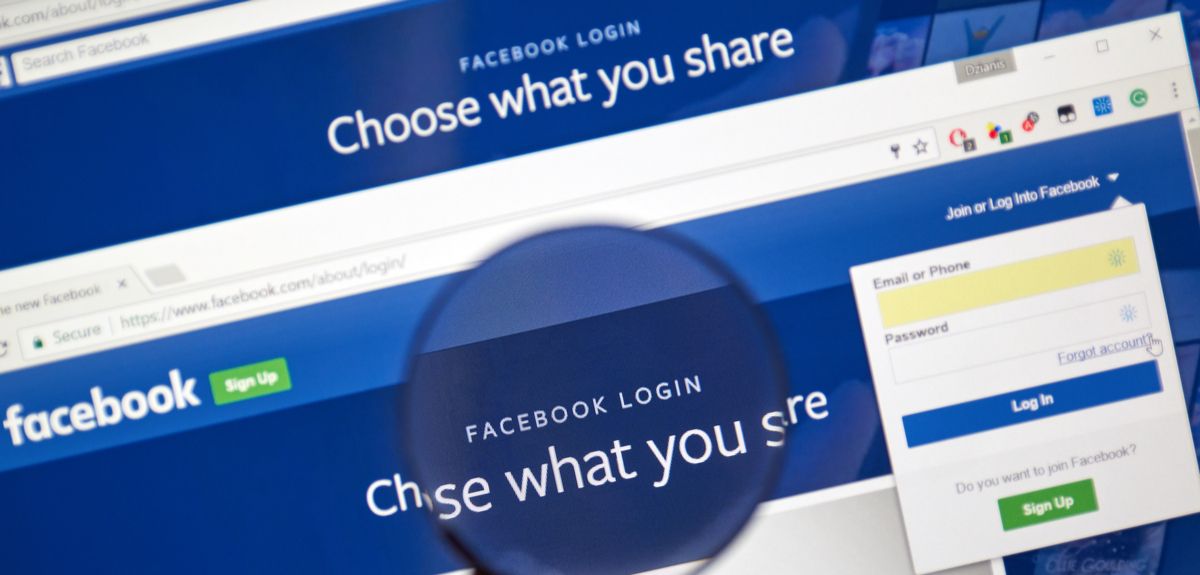
The data generated when we use social media platforms provide a different but complementary perspective to one offered by more classic social science approaches, which rely on asking and getting a response.
Credit: Shutterstock.
Revealing all? What people choose to disclose about their sexual identity on Facebook
What people do not say can be as interesting as what they do, says Dr Ridhi Kashyap. Along with Connor Gilroy of the University of Washington, the Oxford demographer has been studying the disclosure of information on Facebook linked to sexuality in the United States.
Their study, published last month, reveals some possibly predictable findings such as: older social media users are less likely to disclose the gender in which they are interested, than younger users. But more unexpected findings have also come out of the data, say the authors, such as that women in their 20s and early 30s are twice as likely as older women to identify as bisexual, and women are more likely to identify as bisexual or homosexual than men.
A very interesting aspect of the aggregated and anonymised data is that it reveals what Facebook users were prepared to say about themselves in terms of their sexual identity. They chose to make this information public – or not
According to Dr Kashyap, a very interesting aspect of the aggregated and anonymised data is that it reveals what Facebook users were prepared to say about themselves in terms of their sexual identity. They chose to make this information public – or not. It makes a fascinating study, she says - as these differences in who discloses, or not, displays interesting variations by age, gender and relationship status and reveals for whom sexual identity is likely to be salient.
Such data offers a novel opportunity for demographers and sociologists, as they provide a window into the lives of respondents about what people will offer up about themselves when they are not being officially surveyed.
You can see how people signal themselves...[our study] encompassed 200 million Facebook users, 28% (56.3 million) of whom revealed sexuality-related information
Dr Ridhi Kashyap
‘You can see how people signal themselves,’ says Dr Kashyap. ‘They were not doing this in the context of a survey or a data collection exercise such as a census, but for themselves and their social networks and communities.
‘The data generated when we use social media platforms provide a different but complementary perspective to one offered by more classic social science approaches, which rely on asking and getting a response.’
She continues, ‘This, of course, also raises important and new types of ethical issues for researchers to consider, and requires us to be careful and considerate in how we use the data. In our study, we used only aggregated counts – so no individuals can be identified. It encompassed 200 million Facebook users, 28% (56.3 million) of whom revealed sexuality-related information and describe patterns that we observe.’
Mr Gilroy says interesting patterns were revealed, ‘There are large generational differences, as younger social media users share their sexualities much more than older users. Younger users, and especially younger women, are also more likely to be interested in the same gender, or both men and women. For older users, marital status often substitutes for their sexual identity, whereas single people are more likely to disclose their sexuality.’
Younger users, and especially younger women, are also more likely to be interested in the same gender, or both men and women. For older users, marital status often substitutes for sexual identity, whereas single people are more likely to disclose their sexuality
Connor Gilroy
But, just as there are generational differences in disclosure and non-disclosure, there are gender differences.
‘Women are more likely to say they are bisexual than men,’ says Mr Gilroy. ‘Men are more likely to say explicitly that they are heterosexual – and not in a relationship.’
He wonders if the relative absence of heterosexual women, compared to heterosexual men, suggests women do not disclose for fear of being harassed online and appearing ‘available’.
But, he says, it was notable that there still appears to be some stigma around male homosexuality, given that more women than men disclosed same-sex and, more notably, bisexual interests. In the past, he says, the expectation was that people would be heterosexual and, even today, this comes with privilege for men, ‘Anxiety over male homosexuality is much greater [than female homosexuality]...but in the online world, women are concerned about attracting unwanted attention and worried about online safety [which can constrain disclosure].’
Younger generations are more likely to see their sexuality as an important aspect of their identity, which could explain why more are prepared to disclose
Non-disclosure is a fascinating area, say Mr Gilroy and Dr Kashyap but, they add, their study suggests sexuality has become for younger generations a ‘core demographic trait’ alongside ethnicity, gender and race.
‘Younger generations are more likely,’ says Dr Kashyap, to see their sexuality as ‘an important aspect of their identity’, which could explain why more are prepared to disclose.
 10 years on: The Oxford learning centre making an impact
10 years on: The Oxford learning centre making an impact Oxford and The Brilliant Club: inspiring the next generation of scholars
Oxford and The Brilliant Club: inspiring the next generation of scholars New course launched for the next generation of creative translators
New course launched for the next generation of creative translators The art of translation – raising the profile of languages in schools
The art of translation – raising the profile of languages in schools  Tracking resistance: Mapping the spread of drug-resistant malaria
Tracking resistance: Mapping the spread of drug-resistant malaria Cities for cycling: what is needed beyond good will and cycle paths?
Cities for cycling: what is needed beyond good will and cycle paths?